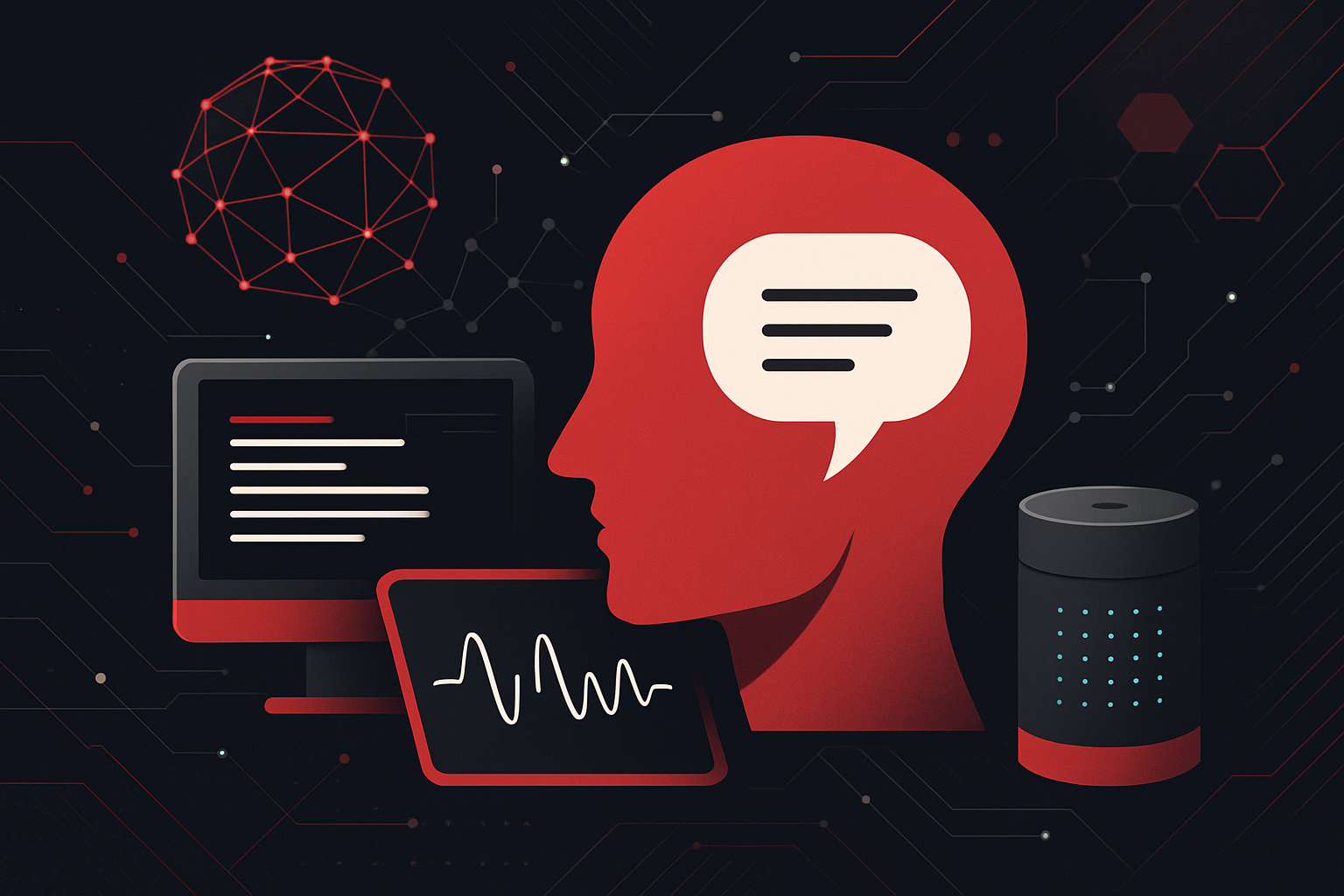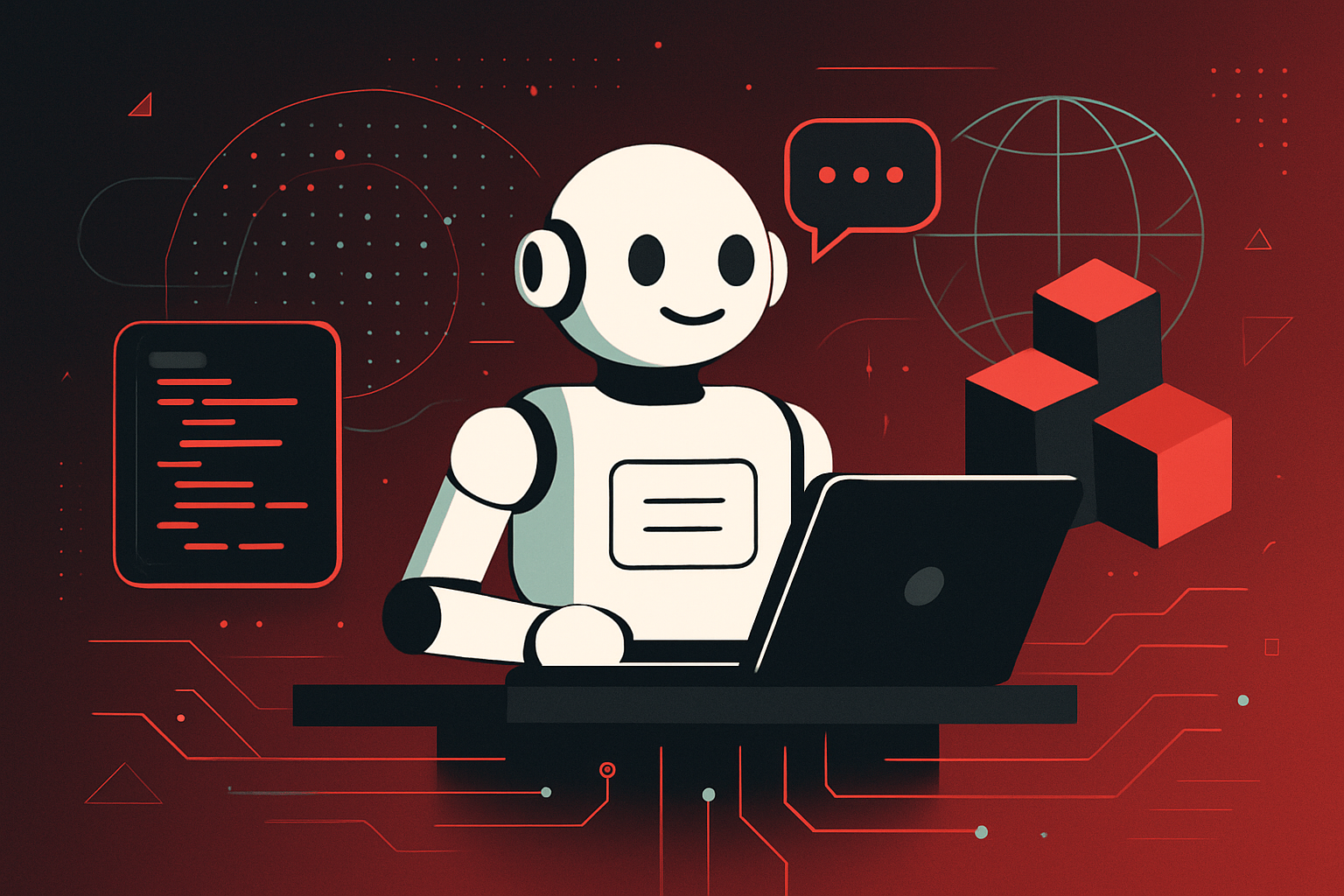The Future of Natural Language Processing

Emerging Trends in Natural Language Processing
Multimodal NLP
Multimodal NLP integrates text, images, audio, and video, enabling models to process and generate information across different data types. This trend is driven by the need for richer context and more accurate understanding.
Example Application:
Visual Question Answering (VQA) systems that respond to questions about images.
Key Technical Aspects:
- Fusion architectures (e.g., transformers with cross-modal attention)
- Alignment techniques for synchronizing modalities
- Datasets like CLIP and VQA
from transformers import CLIPProcessor, CLIPModel
from PIL import Image
model = CLIPModel.from_pretrained("openai/clip-vit-base-patch16")
processor = CLIPProcessor.from_pretrained("openai/clip-vit-base-patch16")
image = Image.open("example.jpg")
inputs = processor(text=["A photo of a cat"], images=image, return_tensors="pt", padding=True)
outputs = model(**inputs)
Large Language Models (LLMs) and Scaling Laws
Scaling model size and training data improves NLP performance. LLMs (e.g., GPT-4, PaLM) demonstrate emergent abilities such as few-shot and zero-shot learning.
Comparison Table: LLM Capabilities
| Model | Parameters | Few-shot Learning | Multilingual | Code Generation |
|---|---|---|---|---|
| GPT-3 | 175B | Yes | Limited | Basic |
| GPT-4 | ~1T* | Yes | Advanced | Advanced |
| PaLM 2 | 540B | Yes | Yes | Advanced |
| LLaMA 2 | 70B | Yes | Moderate | Moderate |
* Estimated parameters; not officially disclosed.
Practical Insight:
Leverage prompt engineering and instruction tuning to customize LLM behaviors for domain-specific tasks.
Efficient and Responsible Model Deployment
Model Compression
Deploying large models in production requires reducing compute and memory costs. Popular techniques:
- Quantization (e.g., int8, int4)
- Pruning unimportant weights
- Knowledge distillation
Code Example: Quantization with Hugging Face
from transformers import AutoModelForCausalLM
import torch
model = AutoModelForCausalLM.from_pretrained("gpt2")
quantized_model = torch.quantization.quantize_dynamic(
model, {torch.nn.Linear}, dtype=torch.qint8
)
Privacy and Security
NLP systems must address data privacy, prompt injection attacks, and model misuse.
Actionable Steps:
- Use differential privacy during training
- Monitor and filter outputs for sensitive content
- Implement access controls for API endpoints
Advances in Explainability
Interpretability tools are vital for debugging and compliance.
Popular Techniques:
- Attention visualization
- Feature attribution (e.g., SHAP, LIME)
- Counterfactual generation
Sample: LIME with Text
from lime.lime_text import LimeTextExplainer
explainer = LimeTextExplainer()
explanation = explainer.explain_instance(
"The movie was fantastic!", classifier_fn=model.predict_proba
)
explanation.show_in_notebook()
Domain Adaptation and Customization
Fine-tuning pre-trained models on domain-specific data improves accuracy.
Step-by-Step: Fine-tuning BERT for Sentiment Analysis
- Prepare labeled dataset (text, label).
- Tokenize inputs using
BertTokenizer. - Train with
Trainerfrom Hugging Face.
from transformers import BertForSequenceClassification, Trainer, TrainingArguments
model = BertForSequenceClassification.from_pretrained('bert-base-uncased', num_labels=2)
training_args = TrainingArguments(output_dir='./results', num_train_epochs=3)
trainer = Trainer(model=model, args=training_args, train_dataset=train_data, eval_dataset=eval_data)
trainer.train()
Real-Time and Edge NLP
Deploying NLP on edge devices or for real-time applications requires lightweight models and optimized inference.
Techniques:
- Distilled models (e.g., DistilBERT)
- ONNX runtime or TensorRT optimization
- Streaming inference pipelines
Table: Model Size and Latency Comparison
| Model | Size (MB) | Inference Latency (ms)* | Accuracy (SST-2) |
|---|---|---|---|
| BERT-base | 420 | 50 | 93% |
| DistilBERT | 250 | 30 | 91% |
| TinyBERT | 66 | 15 | 90% |
* Approximate values on CPU.
Multilingual and Low-Resource NLP
Efforts are increasing to support more languages and dialects, especially low-resource ones.
Approaches:
- Transfer learning from high-resource languages
- Unsupervised and semi-supervised methods
- Use of massively multilingual models (e.g., mBERT, XLM-RoBERTa)
Example: Zero-shot Transfer
A model trained in English can be evaluated on French text using XLM-R.
Actionable Recommendations
- Adopt LLMs for tasks requiring reasoning and context, but use prompt engineering for efficiency.
- Compress and optimize models for production deployment, especially for mobile or edge applications.
- Prioritize explainability in sensitive domains (finance, healthcare) by integrating interpretability tools.
- Leverage domain adaptation to boost performance on specialized tasks.
- Integrate multimodal inputs where richer context is needed (e.g., customer support with text and screenshots).
- Ensure privacy and security by implementing safeguards during training and inference.
- Invest in multilingual support to reach broader audiences and improve inclusivity.
Key Resources and Frameworks
| Purpose | Tool/Framework | Example Use Case |
|---|---|---|
| Training/Inference | Hugging Face Transformers | Model fine-tuning, prompt engineering |
| Compression | ONNX, TensorRT | Export and accelerate models |
| Explainability | LIME, SHAP | Model debugging, compliance |
| Multimodal | CLIP, BLIP | Image-text retrieval, captioning |
| Privacy | Opacus, Differential Privacy Library | Private model training |
Stay updated:
Monitor developments in transformer architectures, efficient inference, and responsible AI to leverage the evolving capabilities of NLP for practical, scalable applications.




0 thoughts on “The Future of Natural Language Processing”